Abstract
Ten years after an incident following which 79 workers developed chloracne due to exposure to tetrachlorodibenzodioxin a study was undertaken to establish the current state of health of the affected employees remaining in the company's (Coalite Oils and Chemicals Ltd, a subsidiary company of Coalite Group Ltd) employment. The opportunity was used to examine effects on mortality, morbidity, carcinogenesis, reproduction, teratogenicity, fetotoxicity, biochemistry, immunology, and genetic change. Concurrently, control groups were established with which to make comparison. The control groups selected from within the works matched the study group in respect of sex and age but it was not possible to match them for occupation and social status. Half the affected subjects still have minor chloracne. Other than this there is no evidence that they have been adversely affected in any way.
Full text
PDF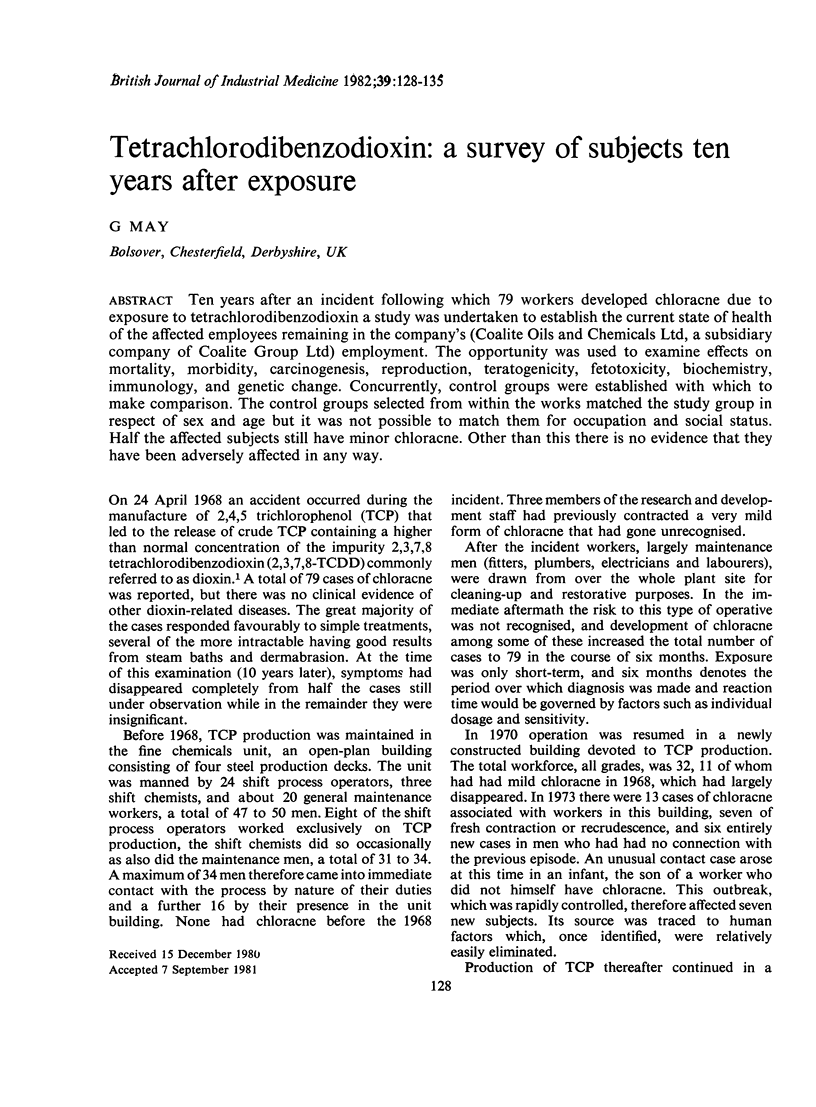
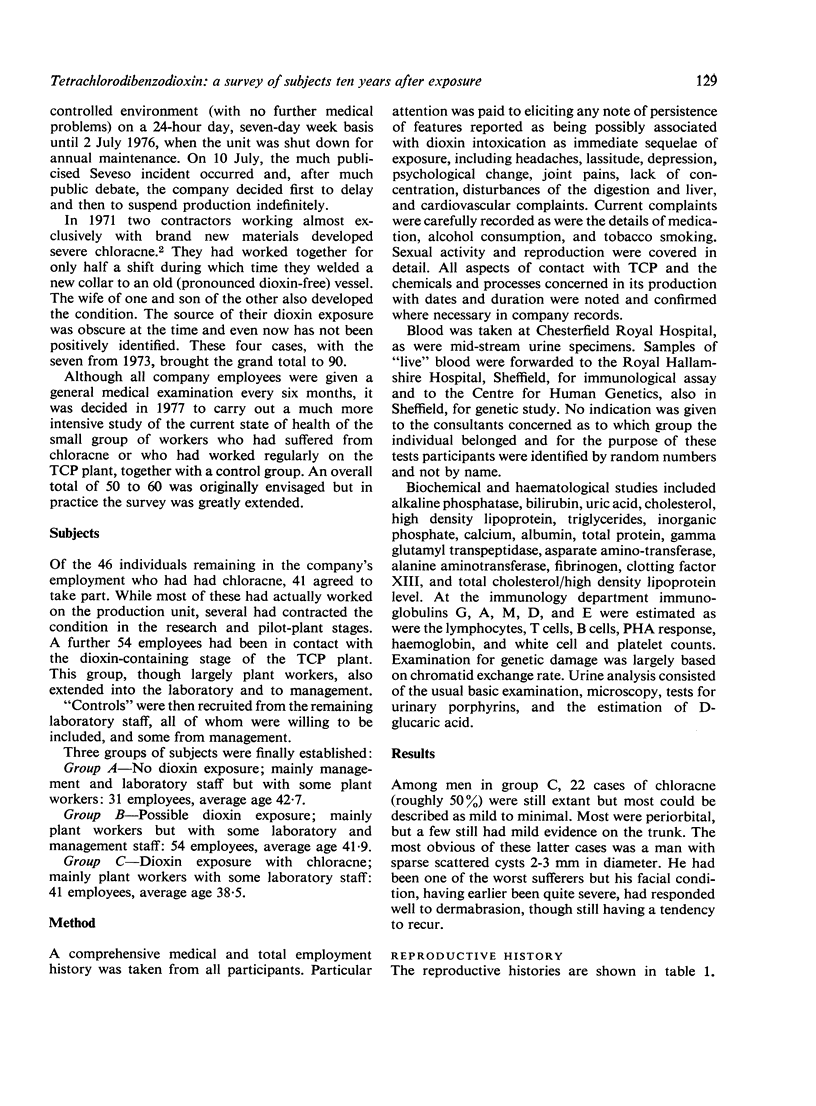
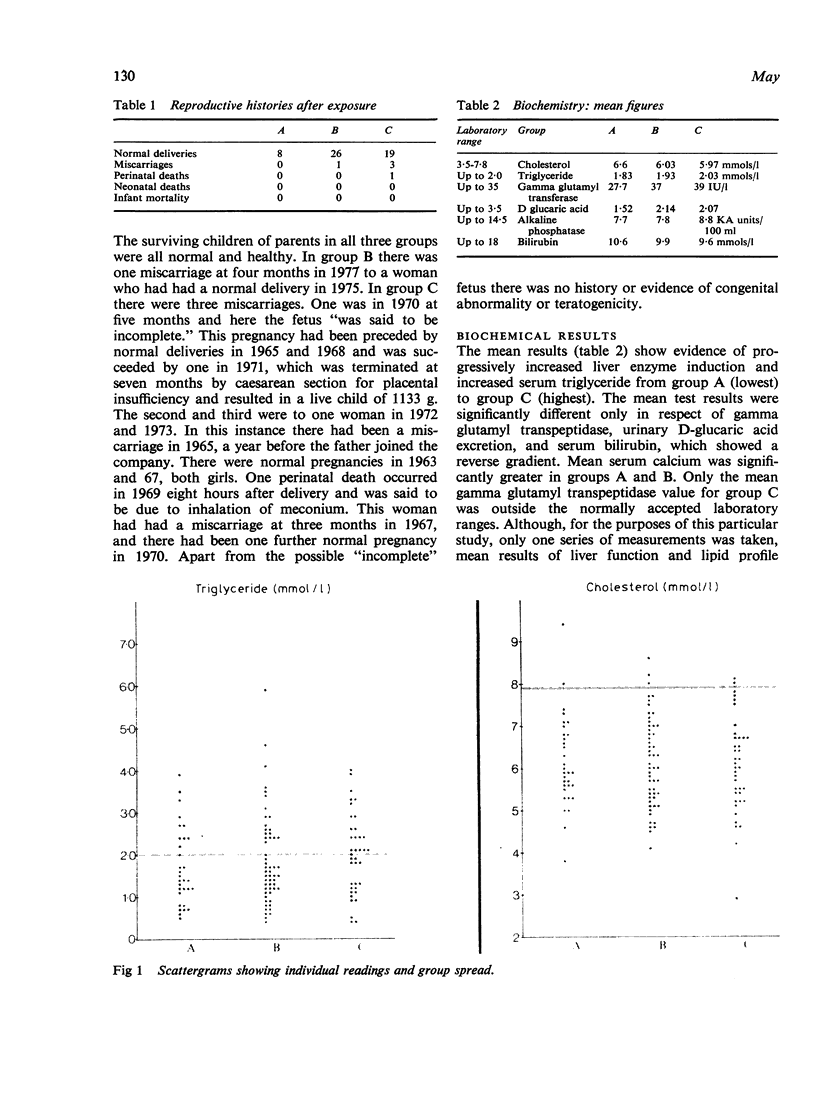
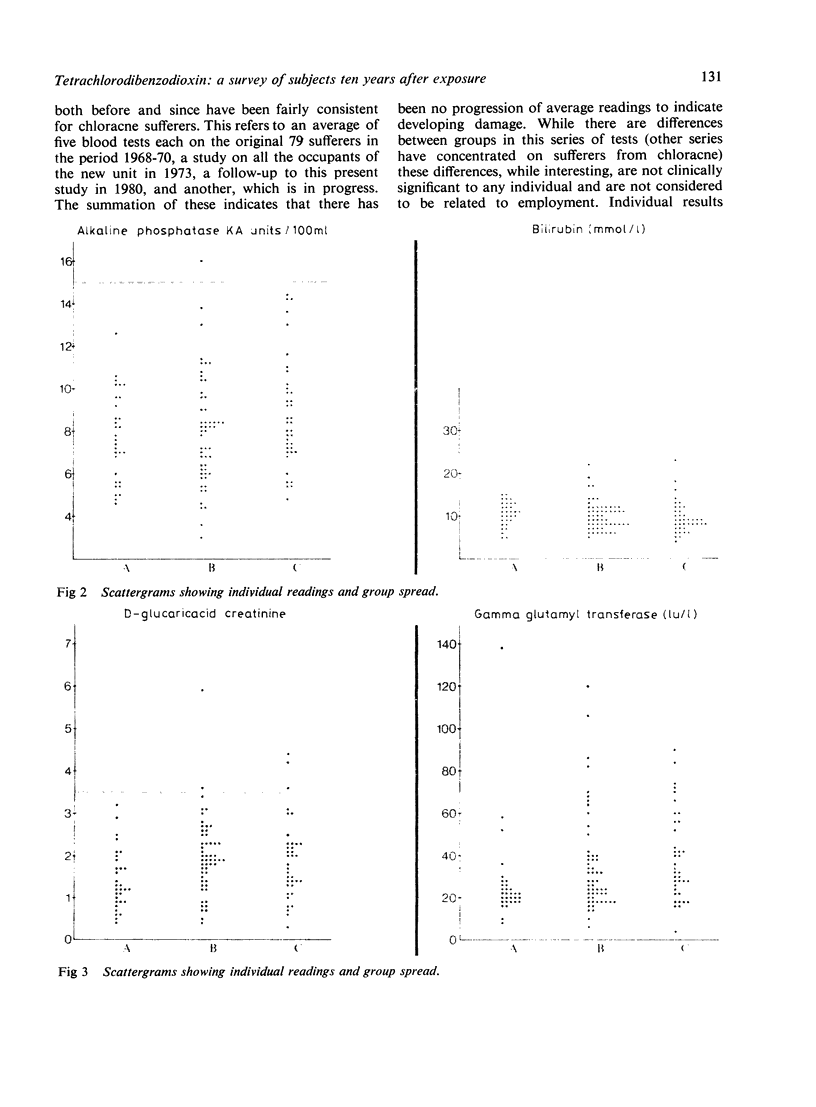
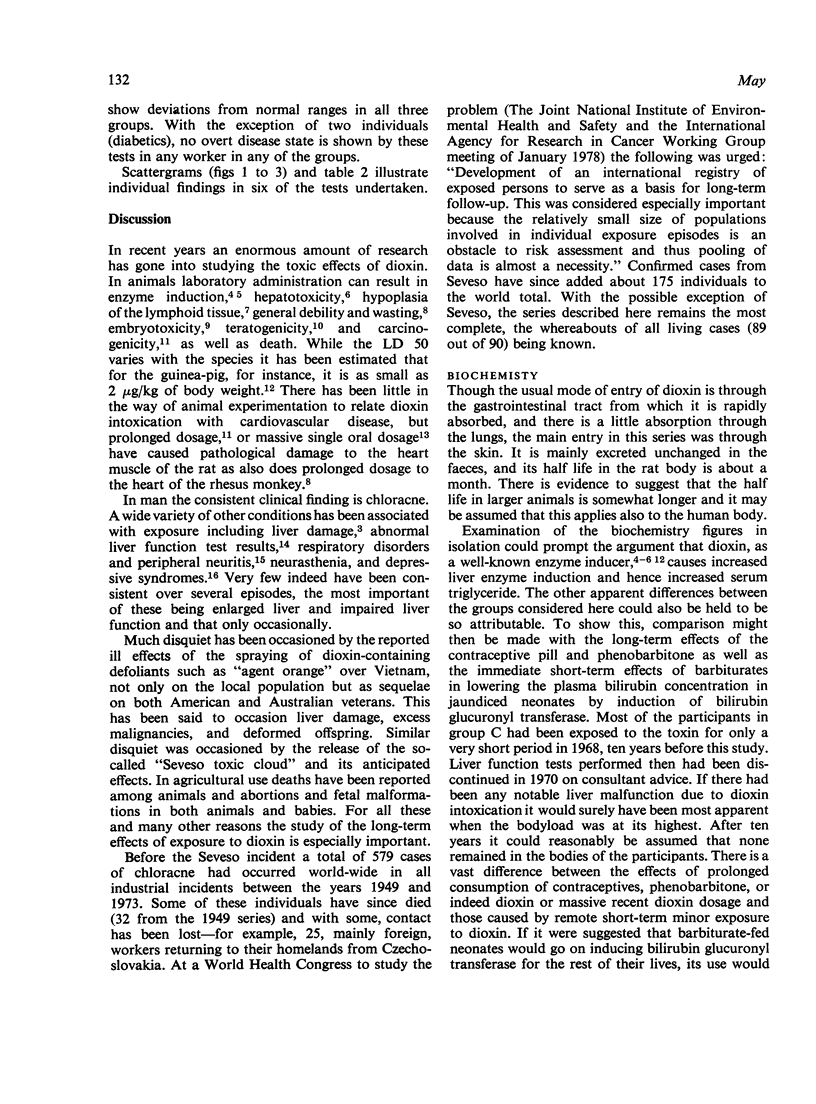
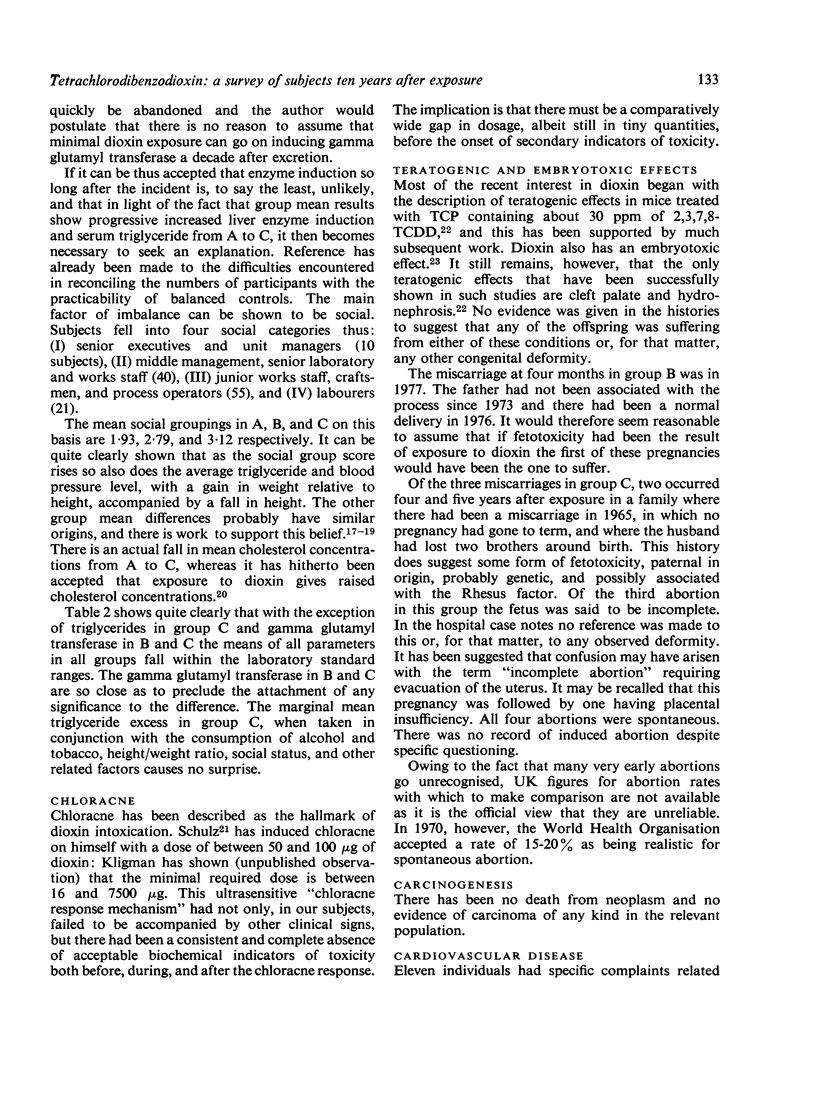

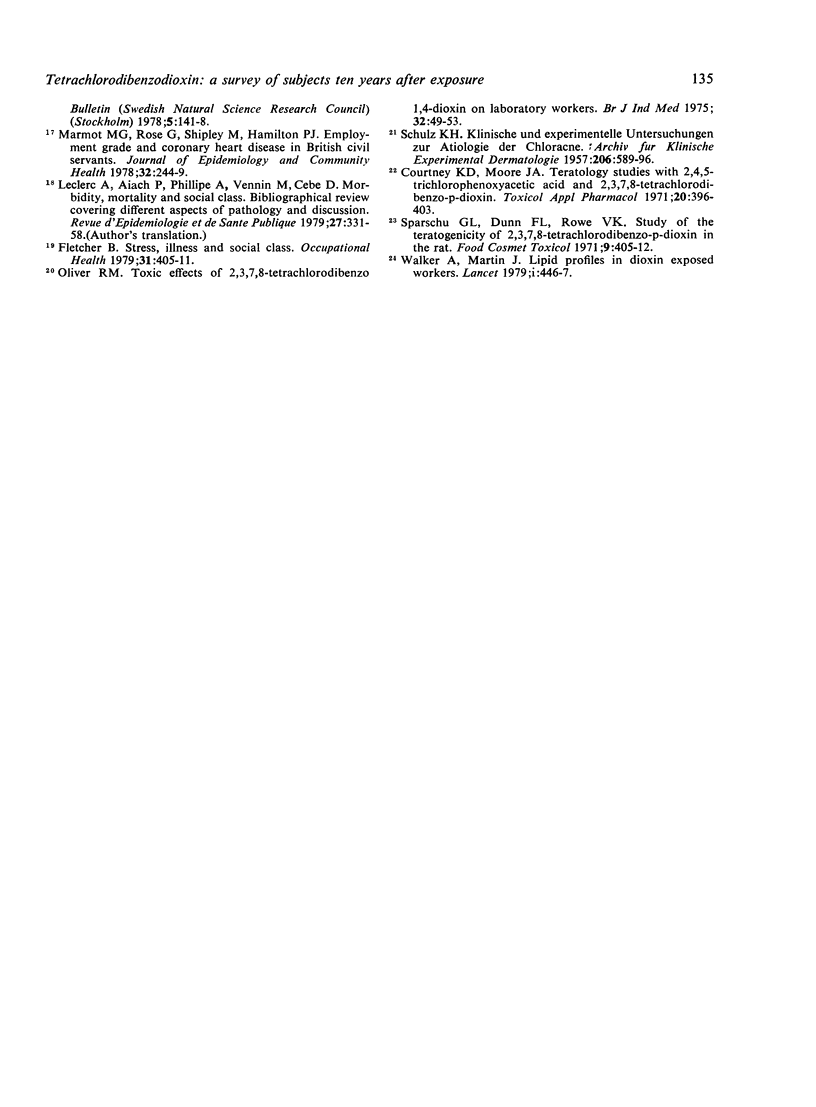
Images in this article
Selected References
These references are in PubMed. This may not be the complete list of references from this article.
- Allen J. R., Barsotti D. A., Van Miller J. P., Abrahamson L. J., Lalich J. J. Morphological changes in monkeys consuming a diet containing low levels of 2,3,7,8-tetrachlorodibenzo-p-dioxin. Food Cosmet Toxicol. 1977 Oct;15(5):401–410. doi: 10.1016/s0015-6264(77)80004-7. [DOI] [PubMed] [Google Scholar]
- Buu-Hoï N. P., Chanh P. H., Sesque G., Azum-Gelade M. C., Saint-Ruf G. Organs as targets of "dioxin" (2,3,7,8-tetrachlorodibenzo-p-dioxin) intoxication. Naturwissenschaften. 1972 Apr;59(4):174–175. doi: 10.1007/BF00637374. [DOI] [PubMed] [Google Scholar]
- Courtney K. D., Moore J. A. Teratology studies with 2,4,5-trichlorophenoxyacetic acid and 2,3,7,8-tetrachlorodibenzo-p-dioxin. Toxicol Appl Pharmacol. 1971 Nov;20(3):396–403. doi: 10.1016/0041-008x(71)90282-1. [DOI] [PubMed] [Google Scholar]
- Courtney K. D., Moore J. A. Teratology studies with 2,4,5-trichlorophenoxyacetic acid and 2,3,7,8-tetrachlorodibenzo-p-dioxin. Toxicol Appl Pharmacol. 1971 Nov;20(3):396–403. doi: 10.1016/0041-008x(71)90282-1. [DOI] [PubMed] [Google Scholar]
- Fletcher B. Stress, illness and social class. Occup Health (Lond) 1979 Sep;31(9):405–411. [PubMed] [Google Scholar]
- Jensen N. E., Sneddon I. B., Walker A. E. Tetrachlorobenzodioxin and chloracne. Trans St Johns Hosp Dermatol Soc. 1972;58(2):172–177. [PubMed] [Google Scholar]
- Jirásek L., Kalenský J., Kubec K., Pazderová J., Lukás E. Acne chlorina, porphyria cutanea tarda a jiné projevy celkové intoxikace pri výrobe herbidic. II. Cesk Dermatol. 1974 Jun;49(3):145–157. [PubMed] [Google Scholar]
- Kociba R. J., Keyes D. G., Beyer J. E., Carreon R. M., Wade C. E., Dittenber D. A., Kalnins R. P., Frauson L. E., Park C. N., Barnard S. D. Results of a two-year chronic toxicity and oncogenicity study of 2,3,7,8-tetrachlorodibenzo-p-dioxin in rats. Toxicol Appl Pharmacol. 1978 Nov;46(2):279–303. doi: 10.1016/0041-008x(78)90075-3. [DOI] [PubMed] [Google Scholar]
- Leclerc A., Aiach P., Philippe A., Vennin M., Cebe D. Morbidité, mortalité et classe sociale. Revue bibliographique portant sur divers aspects de la pathologie, et discussion. Rev Epidemiol Sante Publique. 1979;27(4):331–358. [PubMed] [Google Scholar]
- Marmot M. G., Rose G., Shipley M., Hamilton P. J. Employment grade and coronary heart disease in British civil servants. J Epidemiol Community Health. 1978 Dec;32(4):244–249. doi: 10.1136/jech.32.4.244. [DOI] [PMC free article] [PubMed] [Google Scholar]
- May G. Chloracne from the accidental production of tetrachlorodibenzodioxin. Br J Ind Med. 1973 Jul;30(3):276–283. doi: 10.1136/oem.30.3.276. [DOI] [PMC free article] [PubMed] [Google Scholar]
- McConnell E. E., Moore J. A., Haseman J. K., Harris M. W. The comparative toxicity of chlorinated dibenzo-p-dioxins in mice and guinea pigs. Toxicol Appl Pharmacol. 1978 May;44(2):335–356. doi: 10.1016/0041-008x(78)90195-3. [DOI] [PubMed] [Google Scholar]
- Oliver R. M. Toxic effects of 2,3,7,8 tetrachlorodibenzo 1,4 dioxin in laboratory workers. Br J Ind Med. 1975 Feb;32(1):49–53. doi: 10.1136/oem.32.1.49. [DOI] [PMC free article] [PubMed] [Google Scholar]
- Poland A., Glover E. Chlorinated biphenyl induction of aryl hydrocarbon hydroxylase activity: a study of the structure-activity relationship. Mol Pharmacol. 1977 Sep;13(5):924–938. [PubMed] [Google Scholar]
- Poland A., Glover E. Chlorinated dibenzo-p-dioxins: potent inducers of delta-aminolevulinic acid synthetase and aryl hydrocarbon hydroxylase. II. A study of the structure-activity relationship. Mol Pharmacol. 1973 Nov;9(6):736–747. [PubMed] [Google Scholar]
- SCHULZ K. H. Klinische und experimentelle Untersuchungen zur Atiologie der Chloracne. Arch Klin Exp Dermatol. 1957;206:589–596. [PubMed] [Google Scholar]
- Sparschu G. L., Dunn F. L., Rowe V. K. Study of the teratogenicity of 2,3,7,8-tetrachlorodibenzo-p-dioxin in the rat. Food Cosmet Toxicol. 1971 Jun;9(3):405–412. doi: 10.1016/0015-6264(71)90045-9. [DOI] [PubMed] [Google Scholar]
- Sparschu G. L., Dunn F. L., Rowe V. K. Study of the teratogenicity of 2,3,7,8-tetrachlorodibenzo-p-dioxin in the rat. Food Cosmet Toxicol. 1971 Jun;9(3):405–412. doi: 10.1016/0015-6264(71)90045-9. [DOI] [PubMed] [Google Scholar]
- Vos J. G. Immune suppression as related to toxicology. CRC Crit Rev Toxicol. 1977 May;5(1):67–101. doi: 10.3109/10408447709101342. [DOI] [PubMed] [Google Scholar]
- Walker A. E., Martin J. V. Lipid profiles in dioxin-exposed workers. Lancet. 1979 Feb 24;1(8113):446–447. doi: 10.1016/s0140-6736(79)90929-2. [DOI] [PubMed] [Google Scholar]





